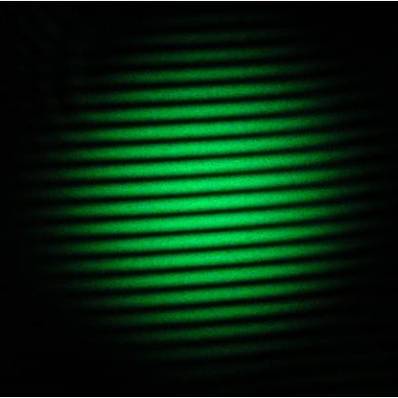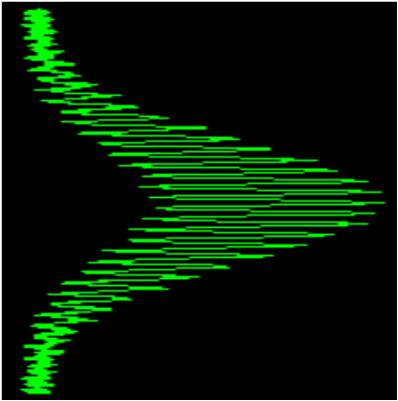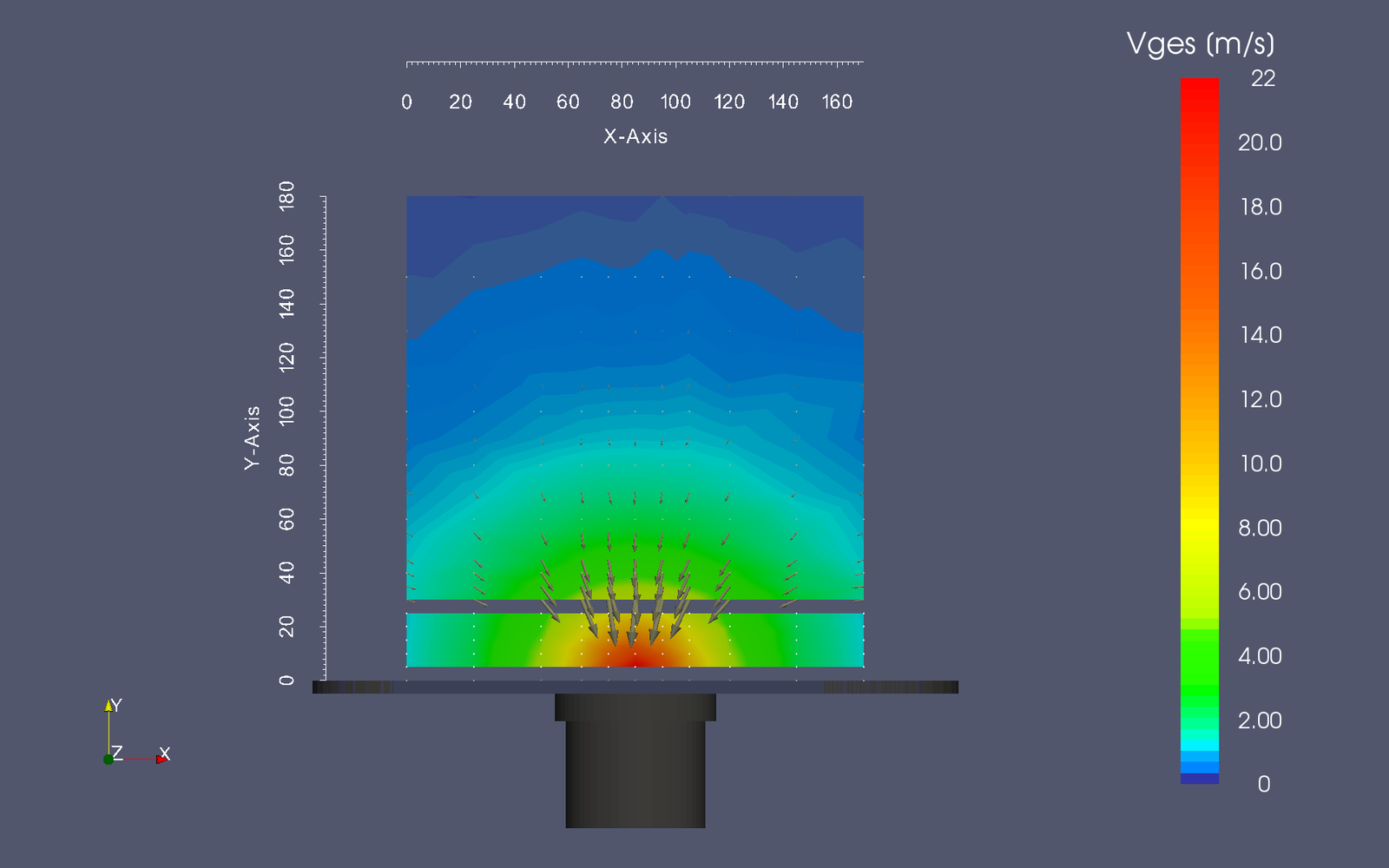You are here: / Home
Non- invasive flow measurements

PDPA - flow fields and particle sizes
3D Phasen- Doppler Particle Anemometer (PDPA)
The Institut für Luft- und Kältetechnik (ILK) uses an ultramodern 3D Phase Doppler Particle Analyzer for non- invasive measurement of velocities of flows and particle sizes in flowing media. A high performance water cooled Argon- Ion Laser offers the possibility for measuring particle sizes (0.5 - 800 µm) and flow rates (from 0 m/s to supersonic) even in zones of mist or vapour.
Measurands
This measurement technique allows the detection of temporally and spatially velocity fields (3D) in high resolution without influencing the flow even in combustion engines and sprays. Of particular interest is the measurement of aerosols of fluids with a high vapour pressure (including water) because their particle size distribution change in sampling systems and analyzers due to evaporation processes.
Measuring principle
The example below describes the measuring principle for one spatial direction.
In a limited measuring volume two laser beams intersect (figure 1, left) forming an interference pattern (figure 1, center). A particle crossing the measuring volume scatters light with the Doppler frequency fD which is proportional to the velocity of the particle. Velocity u can be calculated as the product of Doppler frequency and the distance of the fringes of the interference pattern (δf): u = δf⋅fD If the frequency of the two intersecting laser beams is equal, a stationary interference pattern is formed. If two particles equal in the amount of speed but with opposing directions of flight cross the measuring volume scatterd light equal in Doppler frequency is detected. It is not possible to determine the direction of flight. Technically this problem is solved by a frequency shift between the laser beams. This results in a moving interference pattern. Thereby light scattered by a particle has a frequency f of Δf ± fD depending of the direction of flight. Besides determination of the flow direction measurement of small flow rates becomes possible. The droplet size determination is based on one of the Doppler signals (figure 1, right) detected on three spatially separated detectors. The separation of the detectors causes a phase shift of the signal which correlates with the curvature radius of the droplets. The knowledge of the curvature radius allows the determination of the radius of the droplets. Furter information an brochures can be found at TSI Inc..
Services: measurement and testing
The PDPA allows for example the determination of flow rates and particles sizes of sprays, the evaluation of droplet separators and the measurement of velocity fields behind duct installations. The following figure as an example shows the flow profile of a flat suction hood.
By the help of this data you are able to benchmark or improve the performance of your products and evaluate the results of your flow simulations. If you have got other flow problems we would also like supporting you solving them.
Consulting and Research Services
You wish to develop your products? Due to our long- standing experience in flow and aerosol measuring techniques and our equipment with the recent measuring instruments we are able to support you.
Your Request
Further Projects
Investigation according to DIN EN ISO 14903
These tests according to DIN EN ISO 14903 are possible at ILK Dresden























